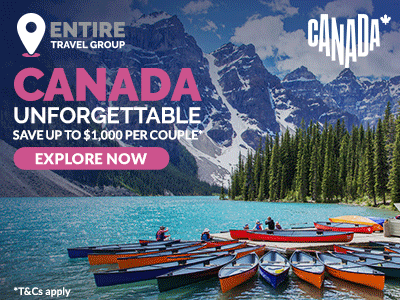
RECENTLY I was researching accessibility for an attraction, but I couldn’t find any information on the business’ website. Usually when an accessibility tab is missing, I find the information under frequently asked questions, so I searched there but I still drew a blank. Amazingly there was information about whether it was okay to take a well-known coffee chain’s food and drinks into the attraction, but there was nothing about accessibility. As the mother of a son who is a wheelchair user, I immediately had a poor impression of the business, without even wheeling through the door. Unfortunately, this is all too common. That’s why I’m so impressed when I find a destination or attraction promoting accessibility.
As a family, when we travel, we want to know where we can stay, play and make incredible memories. We look for destinations that showcase their accessible offerings, allowing us to book with ease. I’ve recently had the opportunity to work with Colorado Tourism and it’s exciting to see a destination actively promoting access and inclusion. They are differentiating themselves from other destinations and making it easier for travellers with a disability, and travel agents, to book the destination with confidence.
Whether it’s their industry newsletter or marketing material, accessible tourism is integrated in everything they do.
It’s particularly pleasing to see a destination using authentic imagery of people with a disability enjoying their destination (as opposed to models without disability hired to pose using disability equipment). Authenticity is important and shows a dedication to capturing the market in a thoughtful way.

Colorado offers adaptive winter and summer activities, making it a year-round destination. In fact, Colorado has the largest adaptive sports program in the world which includes modified skiing, snowboarding, sit-skis and more. Crested Butte has an adaptive sports center with an excellent biking program which includes hand-cycles, making mountain biking possible for someone who doesn’t have use of their legs. Whether a visitor lives with a physical or intellectual disability, they will be included at a level they are comfortable with in Colorado. Similarly, there are programs for travellers who are blind or have a vision impairment. No-one is left behind in Colorado.

Colorado’s National Parks have a variety of options for outdoor exploration with accessible lookouts, campgrounds, picnic spots and even sand wheelchairs available for traversing the dunes at Great Sand Dunes National Park.
For visitors looking for a less active holiday, Colorado has a plethora of relaxing options for taking in the jaw-dropping scenery. Pikes Peak Cog Railway, the highest railway in America and the highest cog railway in the world, provides excellent accessibility for wheelchair users or people with a mobility restriction. While many train journeys in Australia are impossible for people reliant on remaining in their wheelchair both the Pikes Peak Cog Railway and The Durango and Silverton Narrow Gauge Railway have accessible railway carriages.

It’s no surprise that with such a focus on access and inclusion Colorado is also home to the US Olympic and Paralympic Museum. Including Para-athletes in the planning of the museum has ensured it is accessible to all. The exhibition space is wheelchair accessible, and the museum provides open captions, audio-description and assisted listening devices.
Many people assume accessibility is about providing ramps and accessible bathrooms, but there is a large percentage of the community who live with a hidden disability. Hearing impairment, dementia, autism and even colour blindness are all conditions which can affect a person’s ability to enjoy an experience. It’s important for destinations and attractions to make their experience inclusive for people who live with a hidden disability and their travelling companions. The Museum of Contemporary Art in Denver is one attraction that’s doing just that, by being one of the first to offer a way for colour blind visitors to experience art in colour, rather than monochrome, with Technicolor-inspired glasses made by EnChroma.

Everyone loves travel for different reasons, but sharing experiences with those we travel with is something that’s universal. It connects us and being able to participate as a family is key to our destination choice. Let’s hope more destinations take Colorado’s lead.






